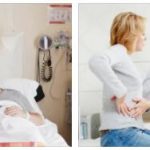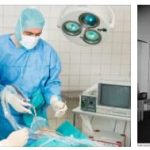Niemann -Pick disease is also known as Niemann-Pick disease. The hereditary disease is one of the lysosomal storage diseases.
What is Niemann-Pick disease?
Niemann-Pick disease is a disease from the group of sphingolipidoses. These are metabolic diseases that mostly manifest themselves in the central nervous system. Within the sphingolipidoses, the disease belongs to the lysosomal storage diseases. These are characterized by malfunctions in the lysosomes. See definitionexplorer for Groin Strain Definitions.
In English-speaking countries, the term lysosomal storage diseases (LSDs) is used for these diseases. In Niemann-Pick disease, sphingomyelin is stored in the liver, bone marrow, spleen and brain. The disease was named after its discoverers Albert Niemann and Ludwig Pick. It was first described in 1914. Niemann-Pick disease is rare.
About one newborn in every 8,000 births develops a lysosomal storage disease. This includes not only Niemann-Pick disease, but also diseases such as Hunter syndrome or Sanfilippo syndrome.
Causes
Niemann-Pick disease is inherited in an autosomal recessive manner. In autosomal recessive inheritance, the defective allele is on a homologous chromosome or on an autosome. Only homozygous carriers become ill. This means that the genome of a cell must have two identical copies of the defective gene on both chromosomes for the disease to break out.
The Niemann-Pick syndrome is based on a genetic enzyme defect. The enzyme sphingomyelinase is affected. Sphingomyelinase is responsible for splitting sphingomyelin. The enzyme defect leads to increased storage of sphingomyelins in the lysosomes of the spleen, bone marrow, brain and liver. Lysosomes are cell organelles that contain digestive enzymes.
They digest non-cellular material such as pathogens or cell debris. They also play an important role in programmed cell death (apoptosis). Animal experiments have shown that the expression of the myelin gene regulatory factor (MRF) is significantly reduced by the mutation in the NPC-1 gene. The protein MRF is a so-called transcription factor. It plays a role in gene coding involved in the formation and protection of myelin sheaths.
Myelin sheaths encase the nerve fibers and ensure rapid transmission of stimuli. The neurological deficits that occur in Niemann-Pick disease are presumably based on defective differentiation of oligodendrocytes. These cells belong to the glial cells. Their cell extensions enclose the cell extensions of the nerve fibers as myelin in the form of myelin. Thus, the faulty differentiation of the oligodendrocytes leads to a missing or insufficient myelination.
In the case of Niemann-Pick type C disease, the cholesterol metabolism is also impaired. In addition to sphingomyelins, cholesterol and other metabolic products also accumulate here in the body cells.
Symptoms, Ailments & Signs
Niemann-Pick disease can be divided into three forms:
- Type IA is also known as the acute infantile neuropathic form. The disease begins at the age of three months and is manifested by poor drinking and developmental disorders of individual tissues and organs.
The main symptom is swelling of the liver (hepatomegaly). This can also occur in combination with swelling of the spleen (splenomegaly). In addition, the lymph nodes are palpable and the skin becomes brownish in color. Neurological decline begins in the second year of life. The affected toddlers become deaf, blind and lose social contact.
The prognosis is dire, meaning that all children with type IA Niemann-Pick disease will die within two years. This form is the most common variant of the disease.
- TYPE IS is also known as the chronic visceral form. It is a mild course with liver swelling and pulmonary infiltrates. There is no involvement of the central nervous system. The life expectancy of the patients is only slightly reduced.
- Neonatal jaundice occurs in Niemann-Pick type C disease. The skin and sclera of the affected newborns are colored yellow due to deposits of the pigment bilirubin. A supranuclear gaze palsy is also typical of this variant of the disease. This leads to progressive paralysis of the eye muscles with double vision or imbalances.
Cerebellar ataxia with disturbances in the coordination of movements can also be observed. As the disease progresses, patients often develop dysphagia. This can cause aspiration pneumonia. The onset of the disease in type C is very variable. The first symptoms can appear in infants, children or even in adolescence or adulthood.
Diagnosis & course of disease
If the risk of disease is known, prenatal diagnosis is possible. If Niemann-Pick disease is suspected, white blood cells are taken from the bone marrow. These appear vacuolated. This means that the leukocytes are riddled with cavities. There are also vacuolated foam cells.
This phenomenon is called “sea-blue histiocytosis”. The lack of activity of the enzyme sphingomyelinase can be demonstrated in the cultures of leukocytes and fibroblasts. In every second child with Niemann-Pick disease, a red macular spot can be seen in an ophthalmoscopic examination.
Complications
Depending on the type, Niemann-Pick disease is accompanied by a number of complications. In TYPE IS, liver swelling and pulmonary infiltrates, i.e. accumulations of foreign bodies in the lungs, can occur. The life expectancy of those affected is slightly reduced and the quality of life is sometimes severely impaired. With type C, the first symptoms can already appear in infancy.
This can lead to severe developmental disorders, which are often associated with cerebellar ataxia with impaired movement coordination. In the course of the disease, swallowing disorders sometimes occur, which lead to aspiration pneumonia and other complications. Those affected sometimes show symptoms of shortness of breath, which is associated with coughing up sputum, an increased body temperature and a blue discoloration of the skin and mucous membranes.
Such cyanosis, in turn, is fraught with serious complications. In TYPE IA, poor drinking and developmental disorders of organs and tissues occur early on. The swelling of the liver is usually associated with swelling of the spleen, which causes severe physical impairments in those affected.
This leads to an increase in infections, the gastrointestinal tract becomes inflamed and the body’s own functions rapidly decrease. Affected infants usually become deaf and blind within two years before finally dying from the serious complications of Niemann-Pick disease.
When should you go to the doctor?
Niemann-Pick disease is an inherited disease that has a progressive course. Parents who find their child has persistent jaundice and muscle problems should contact the pediatrician. If motor development delays or mental behavioral disorders are added, the suspicion of a serious illness that must be diagnosed and treated is obvious.
The parent or guardian should visit a specialized center for rare metabolic diseases. Children who have Niemann-Pick Syndrome require ongoing medical attention because of increasing physical and mental problems.
Unusual symptoms or a sudden increase in typical symptoms must be reported to the responsible doctor. The same applies if the child no longer tolerates the prescribed medication or shows other deviations from usual behavior. Routine treatments such as medication cessation and physical exams may be performed by your family doctor.
In most cases, people with Niemann-Pick disease need to be treated by specialists in metabolic diseases. The individual symptoms are treated by neurologists, orthopedists and speech therapists. Physiotherapists and occupational therapists are also involved in the treatment. In the case of psychological complaints such as depression or delusions, a therapist can also be consulted. Due to the large number of possible symptoms, Niemann-Pick disease usually has to be treated by a team of doctors.
Treatment & Therapy
A causal therapy is currently not known. However, there is evidence that special cyclodextrins can alleviate the symptoms of the disease. Cyclodextrins are cyclic oligosaccharides that are often used as solvents in drug manufacture. Niemann-Pick type C disease is treated with miglustat.
Miglustat is a drug that is only approved in the European Union for the treatment of Niemann-Pick disease and for the treatment of type 1 Gaucher disease. The drug is an imino sugar and a n-butyl derivative of moranoline.
Outlook & Forecast
The prognosis of Niemann-Pick disease is unfavorable. The disease is a genetic defect. Current legislation prohibits scientists from interfering with or altering human genetics. Although the disease can be diagnosed before birth, no cure is possible based on the legal requirements.
To this day, physicians and medical professionals concentrate on the development of adequate medical care after the birth of the affected person. Currently, the treatment consists of initiating drug therapy in order to support the patient’s metabolism as best as possible. Optimizations that contribute to an improvement in the overall situation are already possible during the patient’s development process.
Without treatment, the patient’s quality of life is severely reduced. In addition, life-threatening conditions can develop, since the disease is accompanied by swelling of internal organs, as well as shortness of breath. The risk of an emergency situation is significantly increased without treatment. Long-term therapy is therefore indicated regardless of the intensity of the individually occurring symptoms. Patients need daily care and support in coping with everyday life. Depending on the type of disease, if the disease progresses unfavorably within the first few years of life, the patient may die prematurely.
Prevention
Niemann-Pick disease is inherited in an autosomal recessive manner. There is currently no effective prevention.
Aftercare
In most cases, those affected with Niemann-Pick disease have only a few and only limited follow-up measures available. For this reason, the patient must consult a doctor at the very first signs and symptoms to avoid other complications or discomfort. The earlier a doctor is contacted, the better the further course of the disease, so that a doctor should be consulted as soon as the first symptoms or signs appear.
If the patient wishes to have children, a genetic test and counseling should definitely be carried out in order to prevent a recurrence of Niemann-Pick disease. Most patients are usually dependent on taking various medications.
The person concerned should always ensure that the dosage is correct and that it is taken regularly in order to permanently relieve the symptoms. If anything is unclear or if you have any questions, always consult a doctor first. Likewise, many of the patients depend on the help and support of their own families in their everyday lives. Depression and other psychological problems in particular can be alleviated in this way.
You can do that yourself
The possibilities of self-help are extremely limited in the case of Niemann-Pick disease. Type IA in particular does not offer sufficient opportunities to bring about an improvement in the situation. Despite all efforts, the life expectancy of the sick child is very low.
In everyday life, the focus should therefore be on making the time together as pleasant as possible. A pleasant organization of leisure time is important to build closeness, cohesion and stability. The disease is an enormous challenge for patients and their families. Building up the mental powers is especially important in overcoming adversity. For this reason, psychological support is essential for everyone involved.
For many it is also a help if the possibility of an exchange with other affected people can take place. Therefore, contacting established self-help groups can be beneficial. In joint discussions, an exchange takes place on the basis of mutual understanding. Communication can help with processing. In addition, tips for a good coping are given.
Mental techniques and relaxation exercises promote the reduction of stressors. Since there are often situations of excessive demands and thus vegetative problems, the training sessions can help to reduce stress. This should improve the handling of the overall situation.








